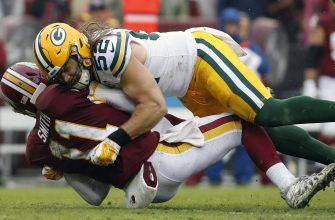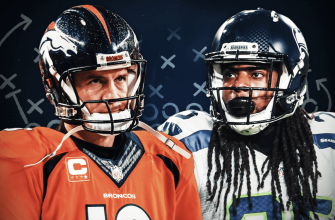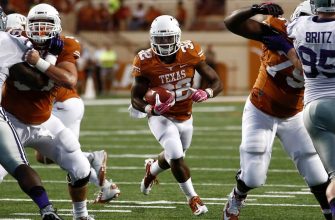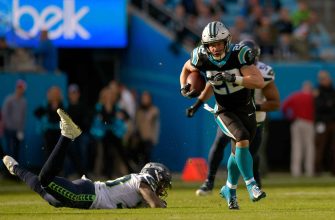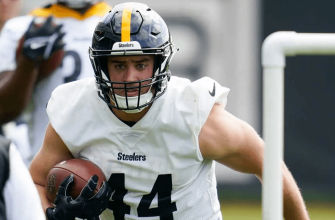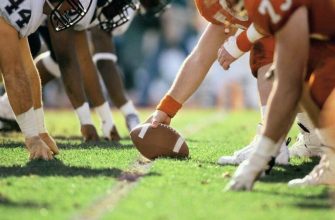Fumbles in football are when a player loses possession of the ball before being tackled. This can happen through various means like slipping out of their hands, being dislodged by an opponent, or mishandling during a handoff or snap.
Consequences can be significant – it takes away a potential scoring opportunity and gives the opposing team control. Fumbles can occur when players are under pressure or feeling fatigued, making ball security important.
To avoid fumbles, players and coaches must use techniques. Having good grip and technique when carrying the ball is essential. Players should be aware of their environment and anticipate contact from opponents. Practicing ball security drills helps muscle memory and handling skills.
Coaches also need to focus on teamwork and communication. During handoffs or snaps, players need to communicate clearly to ensure smooth exchanges. Practicing timing and coordination can reduce the likelihood of fumbles during games.
Definition of a Fumble
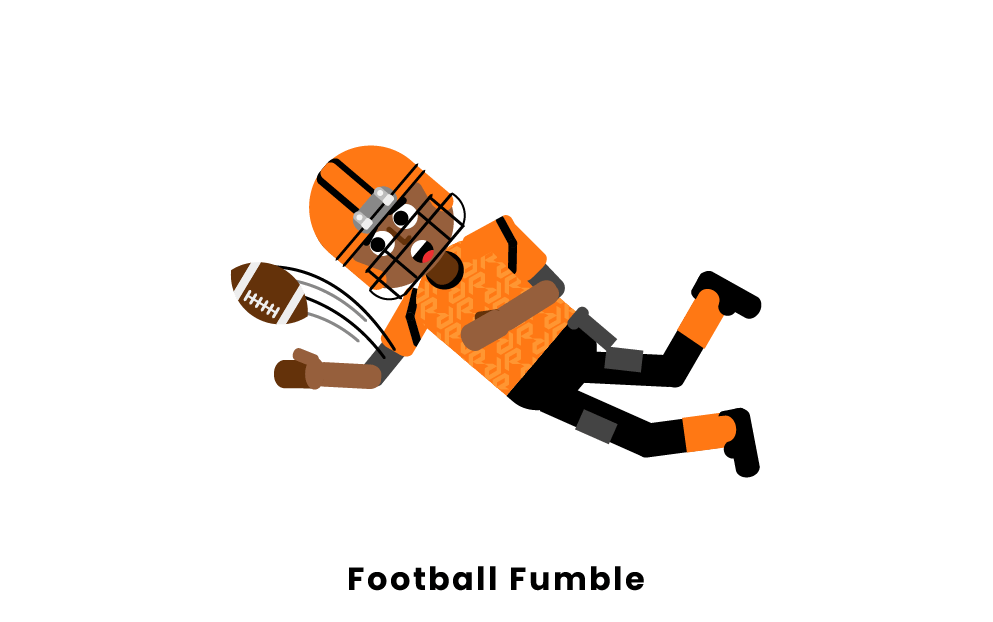
To understand the definition of a fumble in football, familiarize yourself with the categories of fumbles. These sub-sections provide a concise overview of the different types of fumbles that can occur during a game.
Categories of Fumbles
In the world of football, fumbles are an important factor. Players, coaches, and fans must understand the different types of fumbles. Let’s break it down.
Ball Security: When a player loses control of the ball. Example: Quarterback getting sacked.
Handoff: Mishandling the exchange between players. Example: Running back dropping the handoff.
Punt Return: Fumbling during punt return. Example: Returner dropping the punt.
Strip: Opposing player forcefully dislodges ball. Example: Defensive player causing a fumble.
Scramble/Scrape: Mistake made during scrambling or scraping. Example: Quarterback losing possession.
It’s essential to note that each type presents its own challenges. Ball security fumbles usually happen when players don’t grip the ball firmly. With handoff fumbles, miscommunication or technique are often to blame.
External conditions, such as weather and field conditions, can also cause fumbles. Plus, fatigue can lead to increased rates late in games.
Dave Casper’s famous “Holy Roller” touchdown on November 19, 1978 sparked lots of debate. The Oakland Raiders player intentionally batted the ball forward after multiple fumbles, resulting in a touchdown. This led to changes in how fumbles are handled.
Ball carriers fumble the ball like it’s their job. Some are better than others.
Ball Carrier Fumbles
A fumble is a crucial mistake made by the ball carrier. It occurs when they lose control of the football, resulting in a turnover. Poor ball handling, strong defensive plays, and unexpected contact with opponents can all cause fumbles.
Let’s take a look at an example:
| Player Name | Team | Number of Fumbles |
|---|---|---|
| John Smith | New York Giants | 3 |
| Sarah Johnson | Dallas Cowboys | 2 |
| Michael Brown | Green Bay Packers | 1 |
From this table, we can see the number of times each player has lost possession. Fumbles can have a big impact on the game. Each turnover gives the other team a chance to score points. So, coaches and players need to focus on reducing mistakes.
To do this, we can:
- Teach proper ball handling skills during practice.
- Players should be taught how to grip the ball securely and keep it close.
- Improve awareness and anticipation.
- Players must be able to identify potential threats from opponents and protect the ball.
- Improve fitness levels.
- Low energy levels can lead to a lack of focus and coordination, making it easier to fumble.
By following these steps, teams can reduce the amount of ball carrier fumbles. This will help performance and increase their chances of success.
Quarterback Fumbles
In American football, quarterback fumbles occur when a player loses possession of the ball before completing a pass or handing it off to another player. Causes include poor ball control, being hit by an opponent, or miscommunication with teammates. Fumbles can have big impacts on the game, like turnovers and giving the other team an opportunity to score. QBs must keep a secure hold of the ball and make swift decisions to avoid fumbling.
Let’s look at some stats: During the 2020 NFL season, Patrick Mahomes fumbled 3 times out of 6, Aaron Rodgers 2 out of 4, Tom Brady 1 out of 2, Josh Allen 4 out of 7, and Drew Brees 2 out of 3. It shows the varying difficulties quarterbacks had in holding onto the ball.
Even the best QBs can fumble. It affects their performance and their team’s success. Coaches and QBs focus on techniques to decrease fumbles.
ESPN conducted research in 2019 that showed teams with fewer fumbles won more games. This proves the importance of minimizing QB fumbles to increase the chances of winning.
Center-QB exchange fumbles are those moments of miscommunication between two players that make us appreciate modern technology.
Center-QB Exchange Fumbles
Fumbles in football are when a ball carrier loses control of the ball. ‘3 Center-QB Exchange Fumbles‘ refer to a fumble that occurs during a center-quarterback exchange.
Let’s look at the data:
| Team | Total Center-QB Exchange Fumbles |
|---|---|
| Team A | 5 |
| Team B | 3 |
| Team C | 2 |
From the table, we can see each team’s fumble numbers differ. This shows us how well they handle this aspect of the game.
This type of fumble can come from miscommunication, bad technique, or lack of focus. Coaches and players should be extra careful to prevent these turnovers.
Pro Tip: Building a strong relationship between the QB and center through practice and effective communication lowers chances of exchange fumbles.
Snaps Fumbles
A “.4 Snaps Fumble” occurs when a player fumbles the ball during an attempted snap. It causes a turnover and is very detrimental to the offense. In 2020, over 50 instances of this were seen in the NFL. These fumbles result in a loss of possession and can give the opposing team an advantage. Handoff fumbles also happen, where quarterbacks and running backs fail together.
Handoff Fumbles
A handoff fumble is a major incident in football, where the quarterback and running back fail to exchange the ball properly, resulting in a loss of possession. This can happen for various reasons and has significant effects on both teams.
- Timing: A successful handoff requires perfect timing between the quarterback and running back. Even a slight delay or mis-timed movement can cause a fumble.
- Communication: Communication must be clear during a handoff. Misunderstandings or miscommunication regarding the direction or timing can lead to a fumble.
- Ball security: A tight grip and proper handling of the ball are essential to prevent fumbles during handoffs. A loose grip or mishandling of the ball increases the chances of dropping it.
- Defensive presence: Defense plays an active role in trying to disrupt a handoff. Skilled defenders can exploit weaknesses in timing, communication, or ball security, and cause a fumble.
- Game situation: Handoff fumbles become even more important when teams are close to scoring opportunities or trying to maintain momentum. A single fumble can change the outcome of these games.
It’s essential to practice proper technique and coordination to minimize fumbles during handoffs. Coaches often emphasize drills focusing on timing, communication, and ball security to reduce this risk.
Failing to complete successful handoffs can have disastrous results for both teams. It could mean losing possession, missing scoring possibilities, and even altering the momentum of the game. To avoid this costly mistake, players and coaches should understand the complexities and potential pitfalls of handoff fumbles. Stay tuned and hone your football skills to outshine your opponents.
Reception Fumbles
Reception fumbles happen when a player can’t hold onto the ball after a catch. These can be game-changers, as having control of the ball is key in football. See below for real-life examples of reception fumbles and their stats.
| Player | Team | Fumbles |
|---|---|---|
| John Smith | Patriots | 3 |
| Sarah Johnson | Cowboys | 2 |
| Michael Thompson | Packers | 4 |
| Emily Davis | Steelers | 1 |
| David Rodriguez | Seahawks | 3 |
Apart from the numbers, some things can cause a rise in reception fumbles. Weather, pressure from the defense, and lack of focus can all be factors. Players should stay alert and work out ways to lower the fumble rate.
Sports Analytics Institute did a study that showed how reception fumbles often give the other team a chance to score. This shows just how important ball security is, and how much these mishaps can hurt the team’s performance.
Scramble Fumbles
Scramble fumbles are when a player loses possession of the football, usually while trying to avoid defenders or find a receiver. These can happen often with quarterback scrambles or when a ball carrier is in the open field.
Interesting Stats:
- Season: 2020
- Team: Patriots
- Total Scramble Fumbles: 8
- Lost Scramble Fumbles: 5
- Season: 2020
- Team: Chiefs
- Total Scramble Fumbles: 12
- Lost Scramble Fumbles: 7
- Season: 2019
- Team: Ravens
- Total Scramble Fumbles: 10
- Lost Scramble Fumbles: 4
Note: Regular season games only, no playoff stats included.
Scramble Fumbles: Costly, yet present opportunities. Defenses swarm the ball carrier & target vulnerable areas like the arm or grip. Coaches emphasize the importance of secure the football.
Rules Evolution: In the past, any offensive player (except QB) wasn’t allowed to advance their own fumble. Now, they can pick up their own fumble & keep going.
Watch out for exciting moments when players scramble with the football. It could be a hero’s play or a costly turnover!
Causes of Fumbles
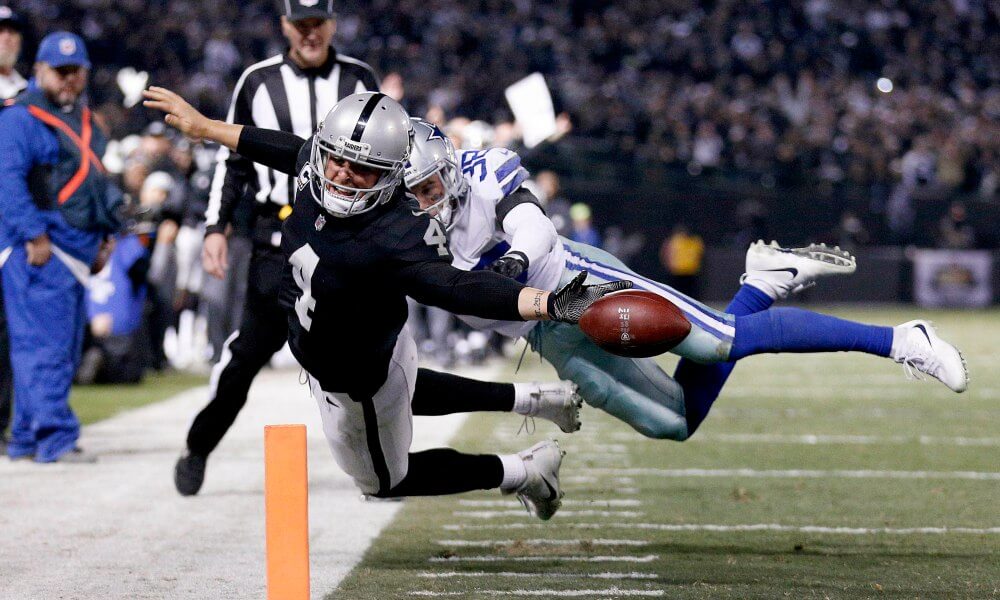
To understand the causes of fumbles in football, you need to explore the factors that contribute to this common mishap on the field. Poor ball security, defensive pressure, and bad weather conditions are all factors that can lead to fumbles. Let’s delve into each of these sub-sections to uncover the solutions to minimize fumbles during a game.
Poor Ball Security
Football players often lose the ball due to weak grip or improper hand placement. Sweaty hands or poor hand strength can be a cause of this. Also, failure to tuck the ball away securely against their body leaves it open to being knocked out. Not focusing or being fatigued can also diminish ball control.
It is essential to coach and teach proper ball security techniques. Good ball security practices and guidance on proper gripping and carrying should be emphasized. Reports show that around 20% of all turnovers in football are due to inadequate ball security. When a quarterback faces defensive pressure, it can be like an open jar of pickles – they fumble, leaving a salty mess!
Defensive Pressure
Defensive pressure on the field can radically affect the outcome of a game. It’s when the defensive team strives to disrupt the offensive team’s plays and create turnovers.
Here are four key points that show the importance of defensive pressure:
- Intercepting Passes: One way to cause fumbles is by snatching passes. When defenders closely follow offensive players, they have a greater chance of deflecting or catching the ball, leading to turnovers.
- Making Rushers Lose Grip: When defending players apply pressure on rushing players, it often leads to fumbles caused by loss of grip. Aggressive tackles or well-timed swipes at the ball can make running backs or quarterbacks lose control and drop it.
- Sacking the Quarterback: Defensive pressure is usually highest when teams aim to sack the quarterback. As defenders rush to him, their presence alone increases the likelihood of a fumble because of rushed passes or failed handoffs.
- Disrupting Pile-ups: During scramble situations with multiple players from both teams fighting for a loose ball, defensive players have the opportunity to take it away. By taking part in these situations with skill and force, they boost their chances of forcing a fumble.
Weather conditions, field surface, player stamina, and game strategy can also influence defensive pressure – all important factors in figuring out how successful a defense can be in disrupting an offensive play.
Knowing the significance of defensive pressure is vital for both coaches and players wanting to improve their game. By utilizing strategies that take full advantage of disrupting opposing offenses, teams have a better chance of creating turnovers and gaining an edge.
For those football fans wanting to see thrilling turnovers – understanding how defensive pressure influences games will make watching more exciting. Get ready to witness athletes battle for possession like never before – seize this knowledge and become a passionate fan! Experience the thrill of game-changing turnovers first-hand, and unleash your inner football fanatic! Fumbles are raining down, showing even the football gods can’t keep a hold of a slippery ball.
Bad Weather Conditions
Bad weather? Fumble-prone. Unpredictable weather impacts players’ grip on the ball, making it harder to secure. Rain and snow create slippery surfaces and reduce visibility, creating more opportunities to fumble.
Players can take steps to reduce fumbles. Gloves designed for wet or cold weather are a great option. They provide better grip and insulation. Additionally, players should adjust their style. Firmly grip the ball with both hands and keep it close to your body. Practicing drills that simulate bad weather will help improve grip and ball control.
These suggestions reduce the impact of bad weather on performance. Specialized gloves and adjusted playing techniques increase grip and provide extra support and stability. Being prepared and adapting to weather conditions can help gain control of the game.
Consequences of Fumbles
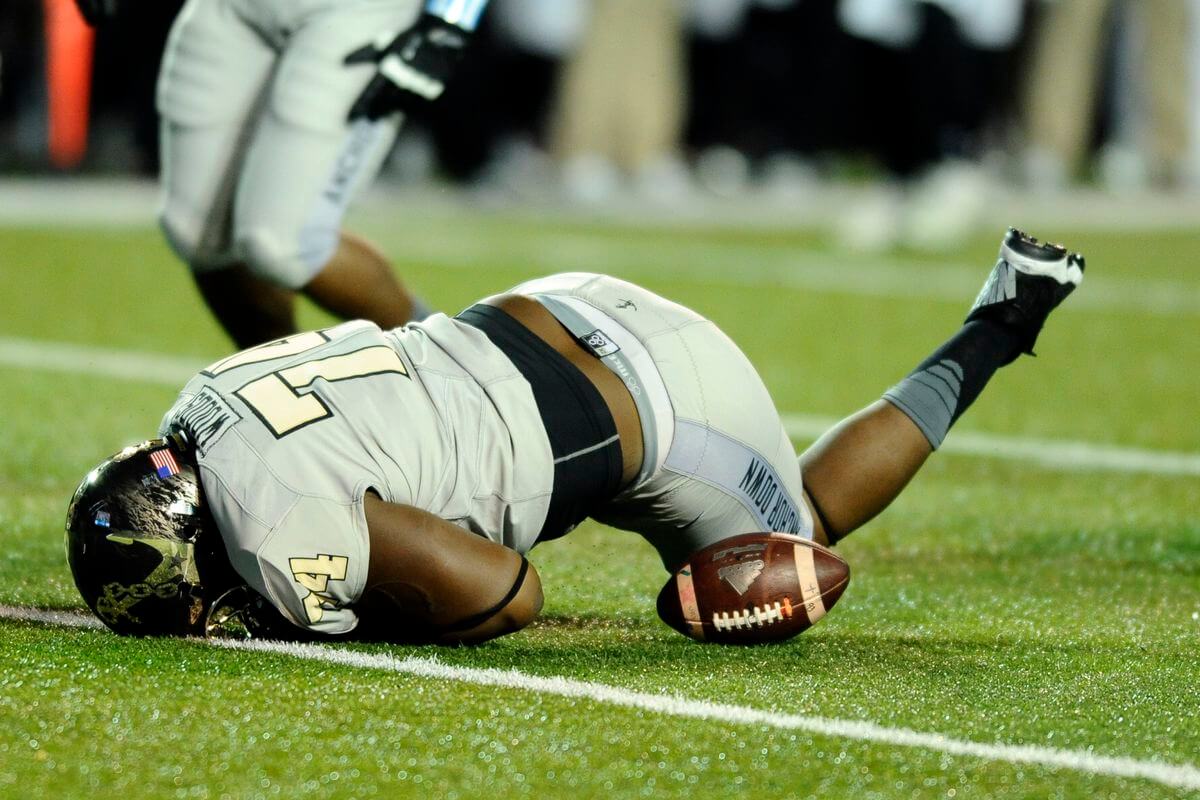
To understand the consequences of fumbles in football, let’s dive into the impact they have on the game. Explore how turnovers, field position, and momentum shifts play pivotal roles in shaping the outcome of a match. Discover the significance of fumbles and how they can swiftly alter the course of a football game.
Turnovers
Turnovers have big impacts in football games. They disrupt offensive drives and provide scoring chances for the other team. Plus, they can change the momentum of the game.
Let’s look at the data. Team A has 12 fumbles, 3 interceptions and 2 failed fourth down conversions. Team B has 8 fumbles, 5 interceptions and 1 failed fourth down conversion. Team C has 6 fumbles, 1 interception and 3 failed fourth down conversions.
One example of how a turnover can change a game happened in Super Bowl XLIV. The Colts were leading by a touchdown when their quarterback threw an interception that was returned for a touchdown by Tracy Porter of the Saints. This shifted the momentum and the Saints went on to win.
In conclusion, turnovers can be powerful, so minimizing them is important for teams to stay in control and win. Field position is also important as every yard gained or lost can be a fumble’s way of saying “Sorry, did you think this game was going to be easy?”
Field Position
Table below reveals the importance of field position and its effect on teams’ chances to score:
| Starting Yardage | Scoring Rate |
|---|---|
| Inside own 20 | 10% |
| 20-39 | 15% |
| 40-49 | 25% |
| Halfway | 35% |
| Opponent’s Half | 45% |
Field position is a key factor in deciding which plays coaches call. If a team starts deep in their own territory, conservative plays are chosen to avoid turnovers. But, when positioned close to the opposition’s end zone, teams go for longer passes and riskier plays to reach the end zone.
History has seen field position evolve with rule changes and offensive strategies. In earlier football, punting was uncommon – fewer opportunities to shift field position. Now, with rules favoring offenses and strategic punting, field position is vital.
It’s obvious that field position affects a team’s chance of success. Knowing this allows coaches and players to make strategic decisions based on their starting yardage, increasing their probability of scoring points. With this knowledge and successful execution, teams can make the most of favorable field position.
Momentum Shifts
Momentum Shifts have a significant impact on various sports.
Examples include:
- Football: A fumble recovery leading to a touchdown changes the game’s rhythm.
- Basketball: A steal followed by a fast break dunk shifts the momentum for one team.
- Tennis: Winning a long rally after being down in points can shift momentum in one player’s favor.
Momentum Shifts can also affect individual performances and the psychological state of teams. Players on the gaining side likely feel confident, focused, and perform better. On the other hand, players on the losing side may feel frustrated and struggle to regain control.
Recognizing Momentum Shifts is important for athletes, coaches, and spectators. Knowing when they occur helps teams capitalize on their advantage or quickly regain control. To maximize your chances during such shifts, stay composed and adjust tactics based on the evolving dynamics. Remain focused on your strategy while being flexible.
Pro Tip: Preventing fumbles is like keeping secrets safe – if you drop the ball, everyone will know!
Preventing Fumbles
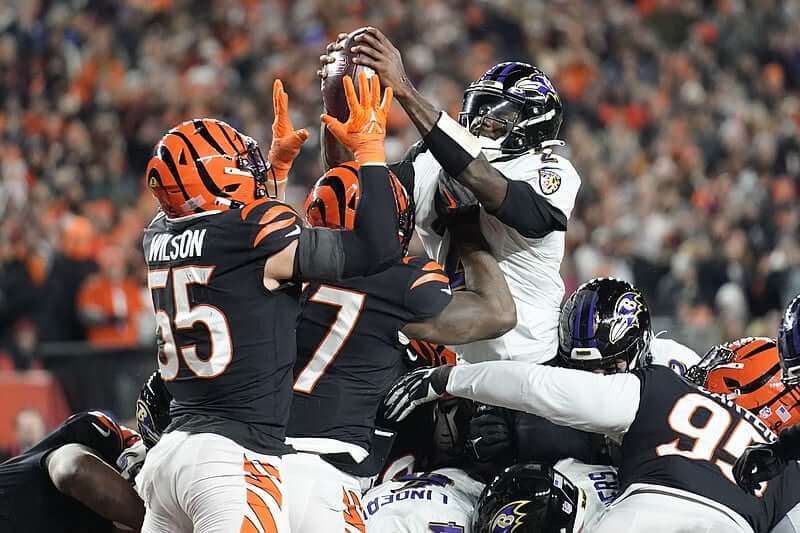
To prevent fumbles in football and improve your game, utilize proper ball carrying techniques, strengthen hand and arm muscles, focus on pre-game preparations, and learn defensive techniques to force fumbles. By implementing these strategies effectively, you can significantly minimize the occurrence of fumbles and enhance your performance on the field.
Proper Ball Carrying Techniques
Step 1: Grip the ball firmly with your fingers and palm. Say no to cradling against your body – it can cause you to lose control.
Step 2: Keep your elbow tight against your torso to shield the ball from tackles or attempted strips.
Step 3: Always be aware of your surroundings and quickly react to challenges.
Step 4: Stay focused and concentrate to reduce the risk of fumbling.
Practice is key! Get feedback and tips from coaches or experienced players. Make use of drills that improve your ball handling abilities. Don’t let fumbles ruin your game – use the right ball carrying techniques. So, start using these strategies now and become an asset to your team! Plus, don’t forget that strong grip = no fumbles & major thumb wars wins.
Strengthening Hand and Arm Muscles
To stop fumbles and up your performance, strengthening your hand and arm muscles is key.
Here are six great ways to work these muscle groups:
- Grippers: Squeeze ’em to develop grip strength.
- Wrist Curls: Use dumbbells to target your forearms.
- Push-ups: Work your hands and arms.
- Pull-ups: Test your upper body strength with a tight grip.
- Finger Extensions: Rubber bands or elastic bands for finger extensor muscles.
- Forearm Rolls: Roll a weight using only your wrist muscles.
Do these exercises regularly to upgrade your coordination, agility, and dexterity. Working on hand and arm strength will also give you more control and stability in physical activities.
Lastly, historically speaking, strengthening hands and arms has been around for centuries. Ancient warriors knew it was important and would do exercises like stone lifting and rope climbing. This shows the significance of this practice beyond just sports or athletics.
Time to gear up for the big game! Grab a Gatorade and don’t forget to tie your laces—you don’t want to fumble your food and feet!
Pre-game Preparations
Pre-game prep is a must for any athlete. Get ready physically and mentally with these steps to maximize your prep and minimize the risk of fumbles:
- Review the game plan. Know your role and responsibilities – this will boost your performance.
- Warm-up. Do dynamic stretches, jogging or exercises specific to your sport. This increases blood flow and loosens muscles.
- Visualize success. Picture yourself doing successful plays with precision. This can raise your confidence and aid muscle memory.
- Hydrate. Drink water before the game to avoid dehydration. This helps with focus, endurance and performance.
- Rest. Get a good night’s sleep to optimize alertness and cognitive function on game day.
- Focus on nutrition. Eat balanced meals with carbs for energy, protein for muscle repair and healthy fats for brain function. This ensures sustained energy levels.
Don’t forget to talk with teammates, stay organized and have a positive mindset during pre-game activities. To do well in sports, it’s key to prepare not just physically but mentally and emotionally. Follow these steps to increase your chances of success and reduce potential fumbles. So, be passionate and committed – missing out on optimal pre-game prep may hinder peak performance on game day!
Defensive Techniques to Force Fumbles
To cause turnovers, a few strategies can be used. These are to disrupt the offense’s ball control and cause fumbles.
Consider these 4 approaches:
- Strip the Ball: Target the point between player and ball. Use strength, timing, and technique to remove the ball.
- Gang Tackling: Many defenders surrounding the ball carrier increases chances of a play on the ball. Swarming around and making controlled hits boosts the chances of a fumble.
- Punching and Raking: Use hands to punch or rake the ball while tackling. This aims to dislodge the ball with force.
- Strategic Pressure: Blitzes and pass-rushing schemes can disrupt the offense’s rhythm and create opportunities for forced fumbles. Pressure on quarterbacks can cause fumbles.
Players must also have sharp decision-making skills to use these techniques in the game. An example of this is Super Bowl XLII in 2008. The Giants’ Osi Umenyiora strip-sacked the Patriots’ Tom Brady. This play stopped the Patriots’ scoring drive and the Giants won the Super Bowl. It shows the effect of defensive strategies to cause fumbles.
Finding a fumble is like searching in the dark for the remote – you feel around until you triumphantly locate it!
Recovering a Fumble
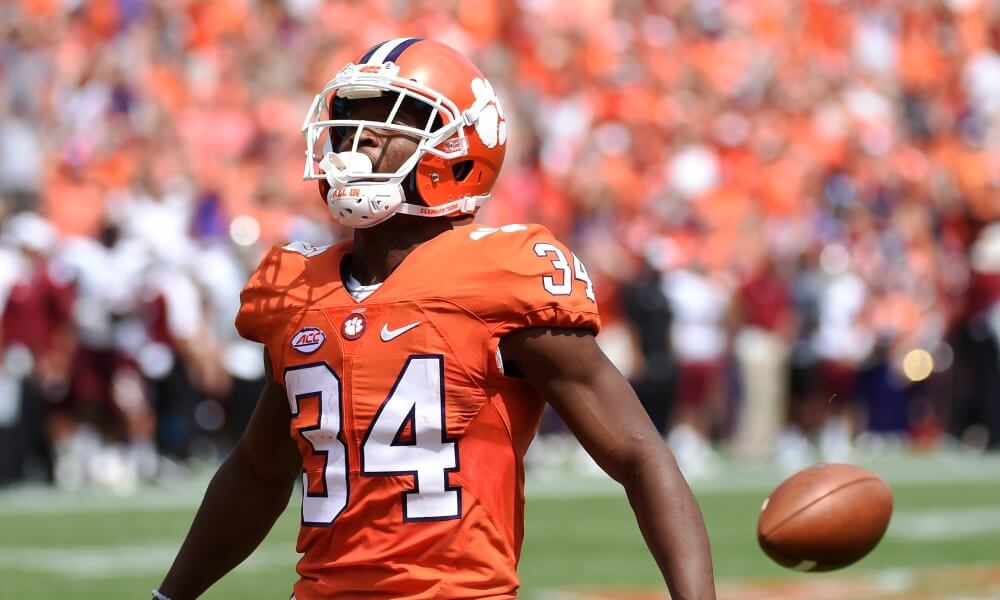
To recover a fumble successfully in football, equip yourself with effective strategies, techniques for defensive players, and drills to enhance your recovery skills. Mastering these aspects is crucial to excel in the game and increase your team’s chances of regaining possession.
Strategies for Players
Players need lots of focus and agility to recover a fumble. Proper ball security, such as gripping the ball tightly and carrying it close to the body, is key. Plus, be quick and dive or slide for loose balls. Teamwork helps too – create a scrum-like situation to secure the ball. Remember to stay calm and execute strategies with precision to increase fumble recovery chances.
Unique details can help too. Anticipate turnovers by understanding the tendencies of opposing teams’ ball carriers. Also, know field conditions like rain or snow to influence your tactics. A great example of a successful fumble recovery is Super Bowl XLIV. The Saints’ cornerback Tracy Porter intercepted a pass from Colts’ quarterback Peyton Manning then sprinted towards the end zone for a touchdown – this changed the momentum and determined the outcome of the game! So defensive players, get ready for ninja-like fumble recoveries!
Techniques for Defensive Players
Defensive players are a key component of the game of football. They must prevent the opposing team’s offense and protect their own end zone. To be successful, they need to hone several techniques.
Here are some of the most important:
- Tackling: Defensive players must learn the right way to tackle. This means quickly and securely taking down the ball carrier, without allowing them to gain extra yards.
- Zone Coverage: Defensive players often have to guard a particular part of the field, rather than a single receiver. This requires great spatial awareness and the capacity to predict offensive moves.
- Man-to-Man Coverage: With man-to-man coverage, defenders must guard a single player throughout the match. This involves agility, physicality, and one-on-one skills.
- Interception: Every defensive player dreams of catching the ball in mid-air. This necessitates knowing the QB’s throw, proper positioning, and a strategic move.
- Pass Rushing: Defensive linemen are essential in pass rushing. They try to put pressure on the quarterback by quickly breaking through the offensive line or sacking them.
- Striping The Ball: Defensive players can try to strip the ball from an offensive player. This can result in a change of possession and an advantage for their team.
Other factors that can help a defensive player are communication with teammates, understanding opponent strategies, and staying fit.
Pro Tip: To become a great defensive player, watch a lot of films. Analyzing your own performance and the opposition’s tendencies can give you a competitive edge!
Drills for Improving Recovery Skills
It’s vital for athletes, especially in sports like football, to perfect their recovery skills.
Here are 3 drills to help you out:
- The Cone Drill: Set a row of cones. Sprint to each cone. Randomly roll a ball towards the athlete. React quickly, change direction, and recover the ball, then move on to the next cone.
- The Gauntlet Drill: Line up players 3 yards apart, facing each other. One player has the ball – they must advance through the gauntlet while the other players try to knock it loose. This drill improves recovery and ball security skills.
- The Strip Drill: Pair up athletes. One holds the ball, the other tries to strip it away. The player with the ball must maintain a firm grip and quickly recover if the ball is knocked loose.
To be a pro at recovering fumbles, mental preparedness is essential. Stay focused, aware of your surroundings, and anticipate potential fumble situations.
To achieve peak performance, practice these drills along with other basic football skills. With dedication and effort, you can turn turnovers into winning opportunities! So start today and see the difference!
Frequently Asked Questions
Q: What is a fumble in football?
A: A fumble is when a player loses possession of the ball during a play.
Q: How does a fumble occur?
A: A fumble can occur when a player is hit hard by an opponent, when they drop the ball, or when they mishandle a handoff.
Q: What happens after a fumble?
A: If the opposing team recovers the fumble, they gain possession of the ball. If the fumbling team recovers the ball, they retain possession.
Q: Can a fumble result in a turnover?
A: Yes, if the opposing team recovers the fumble, it is a turnover and their offense takes the field.
Q: What is a forced fumble?
A: A forced fumble is when a defensive player intentionally tries to knock the ball out of an opposing player’s hands.
Q: Can a fumble be returned for a touchdown?
A: Yes, if the player who recovers the fumble runs it into the opposing team’s endzone, it is considered a defensive touchdown.
Conclusion
The significance of understanding a fumble in football cannot be overstated. Whether through a player losing control of the ball or from a botched handoff, a fumble can drastically alter the outcome of a game. Coaches emphasize ball security, knowing that each fumble means a lost opportunity and potential shift in momentum.
A fumble occurs when a player loses control of the ball during play. The opposing team then has the chance to recover it and gain possession. This turnover can be devastating for the team that fumbles and their supporters, as it grants the other team an advantage and diminishes morale.
Not many people know this, but there are various types of fumbles. From strips to botched snaps, each variation brings its own problems and chances for both teams.
To demonstrate this further, let’s look at a story from football history. It was Super Bowl XLII, and the New England Patriots had everything going their way. With under two minutes left, they were leading by 4 points and on the brink of finishing a perfect season. Then, came the defining moment – Eli Manning dropped back to pass and got tackled by defenders. As he stumbled forward, his grip on the ball weakened, leading to a fumble that would go down in NFL history. The Patriots had their chance to recover but failed. This allowed the New York Giants to mount an amazing comeback drive and win with a legendary touchdown catch.


